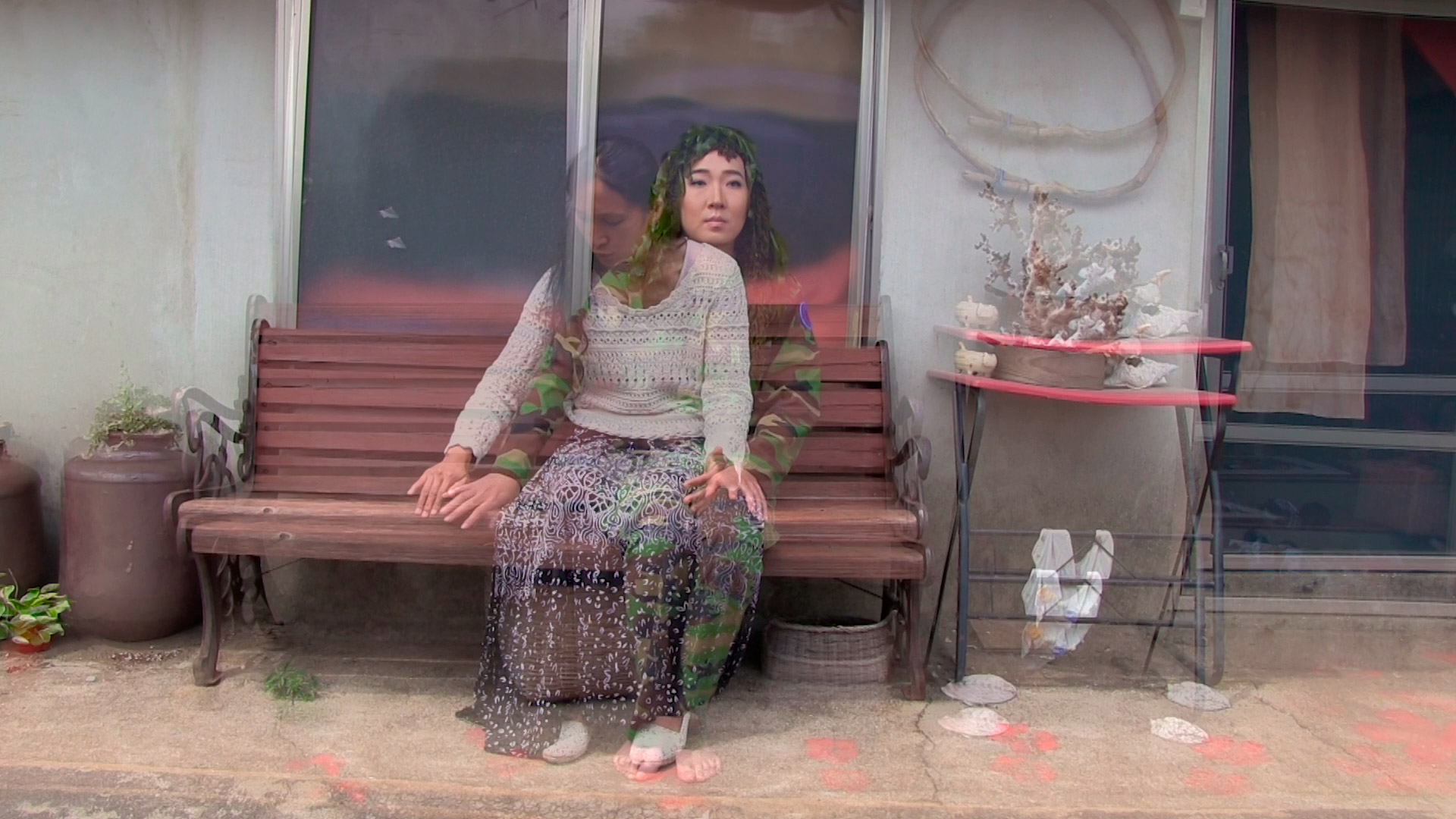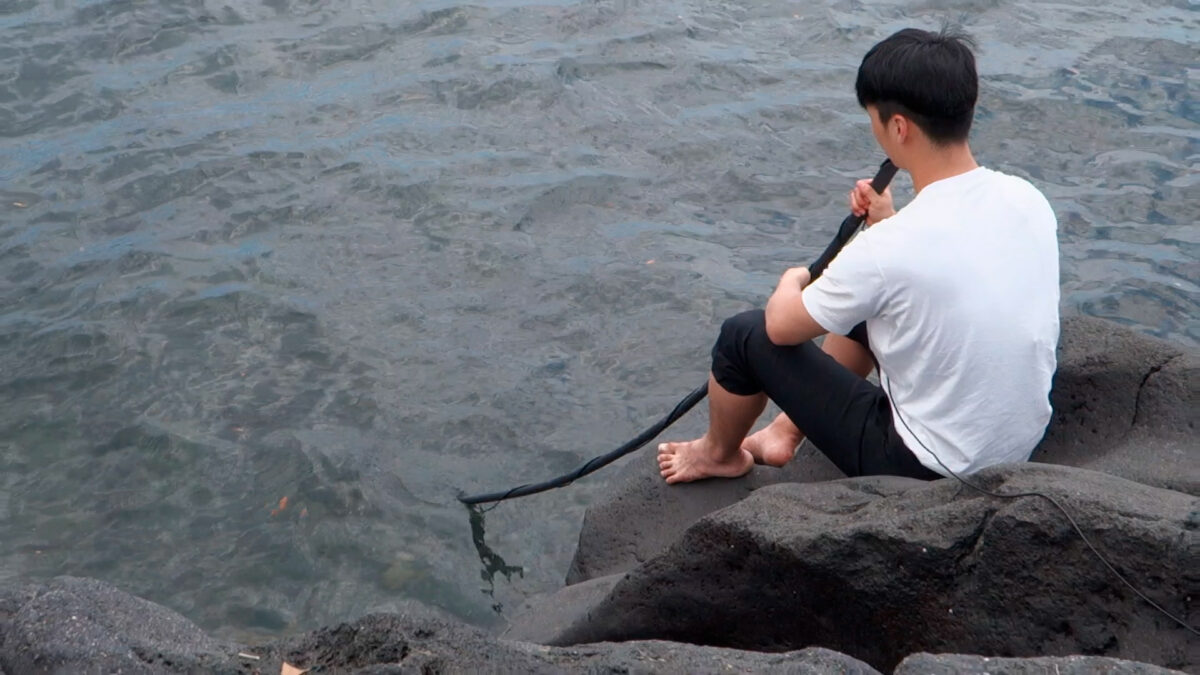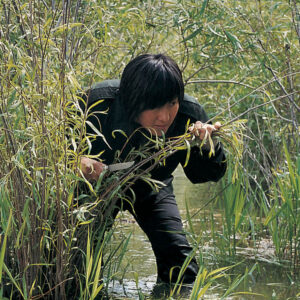Other Hauntings 2016

Jin-me Yoon, Other Hauntings (Dance) (video still), 2016
Single-channel video, 8:14
Other Hauntings (Dance) and Other Hauntings (Song) are two video works that Jin-me Yoon created in 2016, telling the story of the Gureombi rocks on Jeju Island, South Korea, an outcropping of sacred stones upon which a naval base was built in 2012. The military installation generated enormous controversy and political resistance due to Gureombi’s importance as a home for endangered species and sacredness for haenyo divers—it is a UNESCO World Natural Heritage site, a World Geological Park, and a Human and Biosphere reserve. Before the court decision that upheld the base’s construction, protesters interrupted building seven times; in addition to their environmental concerns, opponents perceived the project as promoting American rather than Korean defence goals. Fully 94 per cent of the island’s residents opposed the base, which now hosts American and Canadian warships in addition to Korean forces. It also welcomes cruise ships, making visible the linkages between the military-industrial and tourist complexes, a key connection that Yoon frequently alludes to in her oeuvre.
-
Jin-me Yoon, Other Hauntings (Dance) (video still), 2016
Single-channel video, 8:14
-
Gureombi rocks on Jeju Island, South Korea, 2012
Photograph by Adria Otte
In Other Hauntings (Dance), the story of the Gureombi rocks is narrated by an activist and dancer from Pusan, South Korea. Her hands flit gracefully as she addresses the camera. She invites the viewer to imagine her body as the rocks themselves, gesturing to her hips and knees as she describes the island’s volcanic rock. As she speaks, her image begins to fade, and an androgynous figure dressed in fatigues with seaweed hair flickers into view, haunting the narrative with a queered ghost of South Korea’s militarization and the Korean peninsula’s long Cold War, extending decades beyond the armistice of 1953.
Despite its activist narrative, the work is not documentary. Ultimately it is an artwork that is committed to creating a language for expressing deep encounters between the human and non-human within this sacred natural environment. As the narrator speaks, her words do not simply provide information, but rather they elicit her relationship with the island, and with Yoon herself. Yoon translates spontaneously, hesitantly, with an immigrant’s grasp of the language of her homeland that is both intimate and fragile. Mid-interview, strong winds shake the camera—as if the island were asserting itself as a part of the conversation—prompting Yoon to comment, interrupting her translation. As the figure with the seaweed hair appears, bells ring, as if signalling the presence of the supernatural. Multiple planes of being exist simultaneously in this work, each one haunting the others—the natural, the supernatural, the social, the political, the military-industrial, the touristic, the emplaced, the diasporic, the here, the elsewhere. All share an ecology and force us to think about coexistence on the scale of geological time.


Other Hauntings (Song) tells Gureombi’s story through a peace song that Yoon heard sung by Father Mun Jeong Hyeon, a pro-democracy activist who was awarded the Gwangju Prize for Human Rights in 2012. Inspired by the spirit of Father Mun Jeong Hyeon, a young man walks through a forest path whose powerful presence is made visible through experimental camerawork veering on abstraction. He stops at what resembles an abandoned resort ringed with palm trees and blighted with empty swimming pools, then keeps walking. A maid, groundskeeper, and well-dressed client all make an appearance. At the water’s edge, he begins to sing to the island through a hydrophone inserted into the water through a construction pipe, repurposing the materials of development. He sings urgently, passionately, to the island below the surface of the concrete layer, bringing to mind the dancer’s comment that only the surface of the rock had been damaged and that, below, Gureombi is still alive, still present. As he sings, once again the camera begins to shake, evincing an energetic force and a palimpsest of histories. As military ships come into view, the multiple valences of the site are cleared away for the military-industrial complex, but their presence is still felt.

 About the Author
About the Author
 More Online Art Books
More Online Art Books
 Acknowledgements
Acknowledgements